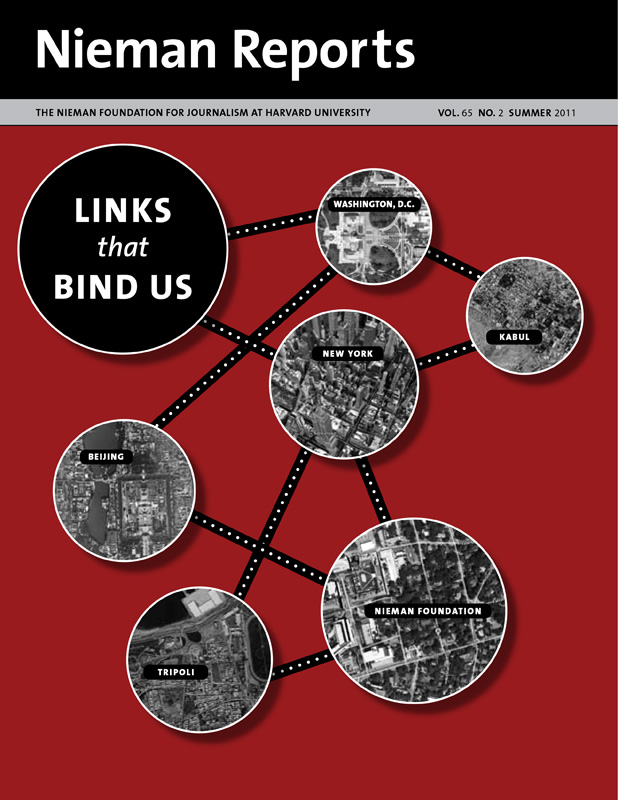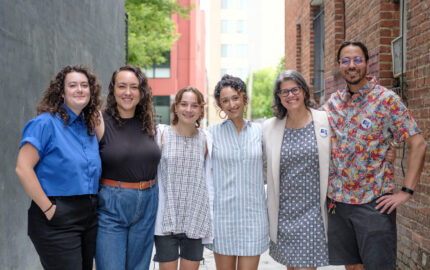
A bilingual sign in a local farmers’ market. Photo by Daniela Gerson.
RELATED ARTICLE
“Reporting Pushes Past Language and Ethnic Divides”
- Daniela GersonThe Alhambra Source was born out of an interest in the dynamic relationships among new technologies, everyday communication practices, and civic engagement in cities with diverse populations. It was inspired by the findings of Metamorphosis, a project that studies how globalization, new technologies, and diversity are transforming urban communities in the Los Angeles area. The aim of the project is to improve community life.
During the past decade, the Metamorphosis research team at the University of Southern California's Annenberg School for Communication & Journalism has collected data in seven Los Angeles County communities, including Alhambra.
What they have learned led to a communication infrastructure theory, which goes like this: The exchange of neighborhood stories between residents, local media, and community organizations plays a crucial role in promoting neighborhood belonging, collective efficacy, and civic participation. When taken together, these three indicators provide a way to assess a neighborhood's level of civic engagement.
Last year the team turned its attention to exploring the potential of the Internet in facilitating local storytelling and promoting civic engagement. This led to a partnership with the journalism school in developing Alhambra Source—and transformed theory into practice in this ethnically diverse city.
The three key indicators in the theory have particular meaning:
- Neighborhood belonging is about how residents in an area feel about their neighbors and interact with them.
- Collective efficacy measures how confident residents feel about relying on their neighbors in working together to solve community problems.
- Civic participation is a measure of how much residents participate in civic activities, such as voting in local elections and volunteering at the local library.
In a study that Metamorphosis did a decade ago, the researchers discovered that Chinese residents in the Alhambra area had the lowest level of neighborhood belonging when compared with those in six other residential areas in Los Angeles County. They weren't surprised since many of Alhambra's residents were recent immigrants from Asia who were adjusting to their adopted country. In 2009, focus groups involving Alhambra residents confirmed that many had low levels of neighborhood belonging, collective efficacy, and civic participation. There was also little interaction among the three main ethnic groups in the neighborhood—Asians, Latinos and Caucasians.
This research team next looked at Alhambra-related stories in the news media. They found scant coverage of Alhambra in the mainstream and regional media; the only news outlet that solely focused on covering the city was a monthly Chamber of Commerce publication. It was this combination of almost no local storytelling and low levels of civic engagement that motivated the creation of Alhambra Source—an online storytelling platform that encourages residents and community organizations to produce, disseminate and discuss stories of importance to them.
Design of the website and decisions about key content also emerged out of focus group discussions with residents and in interviews with community organizations and local businesses. This process added voices to the results from a 2010 survey that collected data on residents' practices for accessing local news and involvement with community organizations. Also measured then were levels of civic engagement and patterns of interaction among ethnic groups. These baseline data will be used in two years to measure the impact of Alhambra Source.
Nancy Chen is a researcher with Metamorphosis involved with investigating challenges to and opportunities for promoting civic engagement through local journalism in Alhambra, an ethnically diverse community in Los Angeles County. More information about Metamorphosis's research and theory can be found at www.metamorph.org.



